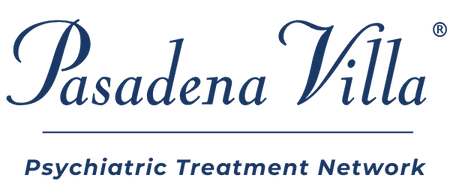For many autistic individuals, the world can feel like it demands too much while offering too little understanding in return. Daily life often asks them to mask who they are, manage overwhelming sensory input, and navigate social rules that feel exhausting and unclear.
Over time, this constant push to fit in and “hold it together” can lead to what is called autism burnout, a deeply misunderstood and often overlooked experience that can cause wide-ranging effects on mental, physical, and emotional health.
What is Autism Burnout?
Autism burnout is a state of intense physical, mental, and emotional exhaustion that many autistic people experience when the ongoing demands of daily life — masking, social pressures, sensory overwhelm, and trying to meet neurotypical expectations — become unsustainable. Autism burnout isn’t just everyday tiredness, anger, or stress. It’s a deep, often disabling shutdown that can last weeks, months, or even years if not recognized and addressed with rest, support, and changes in environment.
In one international survey, over 60% of autistic adults said burnout makes it harder to work or live independently. (Autism, Vol. 25)
Signs of Autism Burnout: What to Look For
Extreme exhaustion
One of the most overwhelming symptoms is profound fatigue. It can feel like the individual’s body and mind simply stop functioning. Everyday tasks — like cleaning, cooking, or leaving the house — may feel impossible.
Loss of skills
Many autistic individuals or those with neurodivergent tendencies describe burnout as “hitting a wall,” temporarily losing skills they previously managed well or even excelled at. This can include speech (difficulty speaking or going nonverbal), executive functioning (planning, organizing, remembering steps), and self-care routines. This regression is frightening and deeply frustrating, especially when others don’t understand what’s happening.
Heightened sensory sensitivity
Burnout can also bring an increased sensitivity to lights, sounds, smells, or textures that were already challenging. Sensory overload can become so intense that it’s painful and forces the person to withdraw from the world just to cope. They may engage in rocking to self-soothe.
Emotional shutdown
Emotional resilience plummets. A person may feel numb, deeply detached, or emotionally “shut off.” For others, intense meltdowns (where built-up stress and sensory overload erupt) become more frequent and harder to recover from.
Social withdrawal + isolation
Burnout can make it nearly impossible to maintain social contact. Many autistic individuals isolate to protect themselves from further overwhelm. However, this can often deepen feelings of loneliness, depression, and hopelessness.
Depression + suicidal thoughts
Perhaps the most devastating aspect of burnout is the toll it takes on mental health and well-being. Studies and first-hand accounts show that burnout can worsen anxiety, trigger depressive episodes, and — in severe cases — lead to thoughts of self-harm or suicide, especially if the person feels trapped in an environment that doesn’t accommodate their needs and isn’t flexible when things need to change.
Learn about sensory rooms for autism.
It’s critical to understand that autism burnout is not simply “being tired.” It’s a sign that an autistic person’s capacity to cope has been exhausted — usually after months or years of masking, pushing through sensory overload, and trying to fit in without adequate support or accommodations. When the signs and symptoms of burnout aren’t addressed, it can lead to long-term disability, job loss, relationship problems, and a profound sense of hopelessness.
What Causes Autism Burnout?
Burnout doesn’t happen overnight. It builds slowly, often over months or years, when someone pushes themselves to meet demands that don’t match their needs.
Some common causes include:
- Masking – Hiding stims, suppressing autistic traits, or copying non-autistic behavior to “pass” in social or work settings
- Sensory overload – Constant exposure to noise, crowds, bright lights, or other overwhelming sensory input
- Lack of accommodations – Working or studying in environments that don’t respect sensory or communication needs
- Social stress – Navigating confusing or demanding social situations without support
- Perfectionism + unrealistic expectations – Trying to live up to neurotypical standards without breaks
One study published in Autism (Vol. 25) found that autistic adults who mask frequently are significantly more likely to experience burnout, highlighting how masking drains energy and well-being over time.
How to Recover from Autism Burnout
Recovery from autism burnout is possible, but it takes time, patience, and the proper support. Unlike typical stress or work-related burnout, autism burnout often requires more intentional recovery than a weekend off or a short vacation can provide. It requires a conscious effort to step back, slow down, and live authentically.
Rest + reduced demands
Rest isn’t optional — it’s the foundation of recovery. Many autistic individuals need to drastically cut back on social, work, or sensory demands. This might mean taking extended leave from work or school, canceling non-essential commitments, or spending more time alone in low-stimulation environments.
For some, this is the first time they allow themselves not to mask or perform for others. Unstructured downtime — without guilt — is essential for the nervous system to reset.
Safe, predictable environments
A calm, sensory-friendly space can make or break recovery. Many individuals benefit from quiet, dim lighting, comfortable clothes, noise-canceling headphones, or weighted blankets. Predictable routines and clear boundaries help reduce uncertainty and overwhelm.
Unmasking + authenticity
One of the biggest contributors to burnout is chronic masking or suppressing natural autistic traits to fit in. Recovery often involves exploring ways to drop the mask safely. That might mean stimming freely, communicating needs honestly, or being open about sensory limits.
Supportive, understanding people
Isolation can deepen burnout, so safe, judgment-free support is vital. This could be trusted family, close friends, other autistic people, or autism-informed therapists. Support groups (online or in person) help many autistic individuals feel less alone.
Accommodations + life adjustments
Sustainable recovery usually means changing the environment — not just expecting the autistic individual to cope harder. This could look like:
Adjusted work or school hours
Remote work or quieter spaces
Clearer communication and flexible deadlines
Using assistive devices or alternative communication methods if speech is difficult during burnout
These changes honor the individual’s needs and help prevent future burnout.
Specialized, neurodiversity-affirming therapy
Therapists or coaches trained in autism and neurodivergence (and who understand burnout) — like the team at The Stables — can help individuals rebuild self-trust, navigate regression in skills, and develop realistic self-care routines. Approaches like occupational therapy can help with sensory overload and daily functioning.
Recovery from burnout is not about “fixing” autism. It’s about giving the autistic brain what it needs to rest, reset, and thrive.
How Our Specialized Treatment Programs Can Help
Many autistic individuals find that recovering from burnout is hard to do alone — especially if they lack the resources, support, or adequate space to recover. There are times when burnout is so severe, prolonged, or dangerous that specialized autism treatment, such as The Stables Autism Program, nestled in the Great Smoky Mountains just outside of Knoxville, Tennessee, can make all the difference.
A traditional therapist or program that doesn’t have a deep understanding of autism and neurodivergent tendencies may see burnout as simple depression, stress, or anxiety. They may try to “fix” the autistic individual’s natural traits — like stimming, special interests, or social differences — instead of adjusting the environment that caused the burnout in the first place. This can make burnout worse by reinforcing shame and encouraging more masking.
By contrast, autism-informed treatment is built on the understanding that:
- Masking (hiding autistic traits) is exhausting and unsustainable.
- Sensory overload, social pressure, and unrealistic expectations are real burnout triggers.
- “Regression” — like losing speech or daily living skills during burnout — isn’t failure but a sign the individual’s capacity is depleted.
- Recovery requires rest, environmental changes, and permission to be fully autistic — not more pressure to “act normal.”
Autism-informed treatment honors autistic individuals and those with neurodivergent tendencies as they are. It doesn’t try to make them “less autistic”. It helps them understand themselves better, set healthy boundaries, and build a sustainable, authentic life. For burnout, this difference is huge — it’s the difference between pushing someone to “function” again too soon, and truly helping them heal, recover lost skills, and avoid future burnout cycles.
Benefits of specialized autism treatment
Support for personal independence
Autism treatment programs often focus on building practical daily living skills, such as managing schedules, balancing rest and activities, and utilizing supports to reduce sensory stress. This helps individuals live more independently without experiencing burnout.
Development of coping skills
Therapists trained in autism and neurodivergence can teach self-advocacy skills, stress management strategies, and techniques for requesting accommodations. Many programs also incorporate mindfulness, self-regulation, and communication skills that facilitate the management of daily living demands.
Providing a safe place to unmask
Autistic burnout is closely linked to masking. Specialized programs create environments where individuals can be themselves, communicate naturally, and feel understood without judgment. Having this safe space can make a huge difference in recovery from burnout.
Connecting to a supportive community
Many people with autism feel isolated. At The Stables, our treatment programs connect clients with ASD to peer groups, support networks, and mentors with autism who model healthy, sustainable living. Feeling seen and supported helps alleviate loneliness that exacerbates burnout.
Hope for the Future
Autism burnout can feel frightening and lonely, but it’s not a personal failure — it’s a signal that something needs to change. No one should have to burn out just to exist in the world. With more awareness, supportive environments, and compassionate care, recovery from burnout is possible — and so is a life that feels fulfilling, authentic, and sustainable.
References
- Hull L et al. “Masking and Burnout in Autism.” Autism, Vol. 25.
- Crompton CJ et al. “Impact of Burnout on Daily Life in ASD.” Autism, Vol. 25.
Pasadena Villa
The Stables Autism Program
At The Stables in Sevierville, Tennessee, we recognize that not all great minds think alike. To help our clients reach their full potential, we offer a wide range of individualized programming tailored to their pace and needs. As part of our philosophy of healing and skill-building, The Stables offers evidence-based autism therapies, including animal-assisted therapy and nature-centered outdoor experiences.

